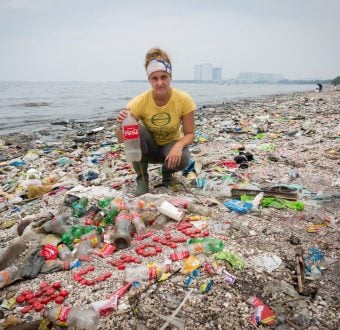On June 11, the Coalition to Prevent Chemical Disasters held a tele-briefing on the status of President Obama’s 2013 Executive Order (EO) to improve chemical plant safety and raised questions for next week’s public webinar update on the EO hosted by executive agencies. Read the transcript or listen to the audio recording of the briefing here.
Speakers on the call included Professor and Chief of Occupational and Environmental Medicine at the University of Illinois Hospital and Health Sciences System Dr. Peter Orris, Health and Safety Specialist of the United Steelworkers (USW) Kim Nibarger, Executive Director of Texas Environmental Justice Advocacy Services (t.e.j.a.s.) Juan Parras, and Illinois State Representative Cynthia Soto. Greenpeace’s Legislative Director Rick Hind moderated the call. Ron White and Amanda Frank from the Center for Effective Government (CEG), Carli Jensen from U.S. Public Interest Research Group (PIRG), two-term Chemical Safety Board member Dr. Gerald Poje, and Michele Roberts from the Environmental Justice and Health Alliance were also on the call.
Dr. Peter Orris offered the public health perspective on chemical security based on his expertise in Chicago. Orris stated that Chicago hospitals, based on recent surveys, are limited in their capacity to respond to chemical incidents and would likely need federal and other outside assistance if one were to occur. If a big city like Chicago with five major hospitals is ill-equipped to respond to chemical disasters, then more rural areas with fewer resources certainly cannot be expected to be able to properly respond. Orris emphasized, “prevention is the key.”
Kim Nibarger of USW and Representative Soto highlighted the need for more whistleblower protections at chemical facilities. Nibarger also provided statistics on incidents at USW facilities, which only constitute a small percentage of chemical plants nationwide. There have been 56 fatalities since 2005 and an average rate of forty-four fires a year since 2007 at USW facilities alone.
Ron White of CEG pointed out that it was pure luck that the West, Texas explosion occurred at night and not when the three impacted schools were in session. Michele Roberts of EJHA spoke about the 3.8 million people, most of whom are people of color, who live in fenceline communities—the areas in closest proximity to chemical facilities across the country. Roberts referred to President Obama’s past statements on environmental justice and noted that if he wants his legacy to include strong environmental justice leadership, then he needs to act on this issue.
Rick Hind of Greenpeace and Dr. Gerald Poje hammered in the costs of incidents compared with the savings from conversions to safer processes and made clear that “no new legislation is necessary.” The EPA can prevent chemical disasters using CAA authority, and the Executive Order is “an open invitation” for the EPA to take action. Poje warned that if action is not taken now, this opportunity to protect communities will be lost.
The briefing emphasized the broad reach of chemical disasters and the many constituencies who should be involved in the process of securing these facilities. Speakers stressed the need for immediate new rules from the EPA to require safer processes at chemical facilities as the agency first proposed thirteen years ago yesterday. The EPA should act now using its Clean Air Act authorities. Current voluntary measures are insufficient because, as Mike Wright of USW noted at Wednesday’s Chemical Safety Board meeting, “not everyone volunteers.”
Inherently safer technology (IST) requirements improve the safety of facilities while empowering communities to point to examples and ask local plants “why not?” Requirements create an expectation for safe practices that does not exist with voluntary provisions.
The EPA and other executive agencies are holding a webinar on June 19 to update the public on the status of the Executive Order. Webinar participants can question the effectiveness of voluntary measures by citing the hundreds of chemical incidents that have occurred since the fatal fertilizer explosion in West, Texas, including the June 10 fire and subsequent water contamination and fish kill in York County, PA. The webinar should also address the EPA’s continued resistance to using its Clean Air Act authorities to require feasible conversions to safer processes at chemical facilities.
The EPA has pledged to propose rules in September of this year in order to comply with the Executive Order, yet the agency’s slow timeline is jeopardizing the finalization of rules before Obama leaves office. Take action and tell President Obama to use his authority and speed up the rule-making process to reduce these hazards and protect our communities by requiring safer practices.


